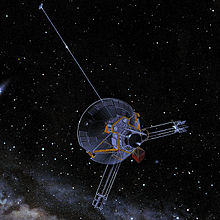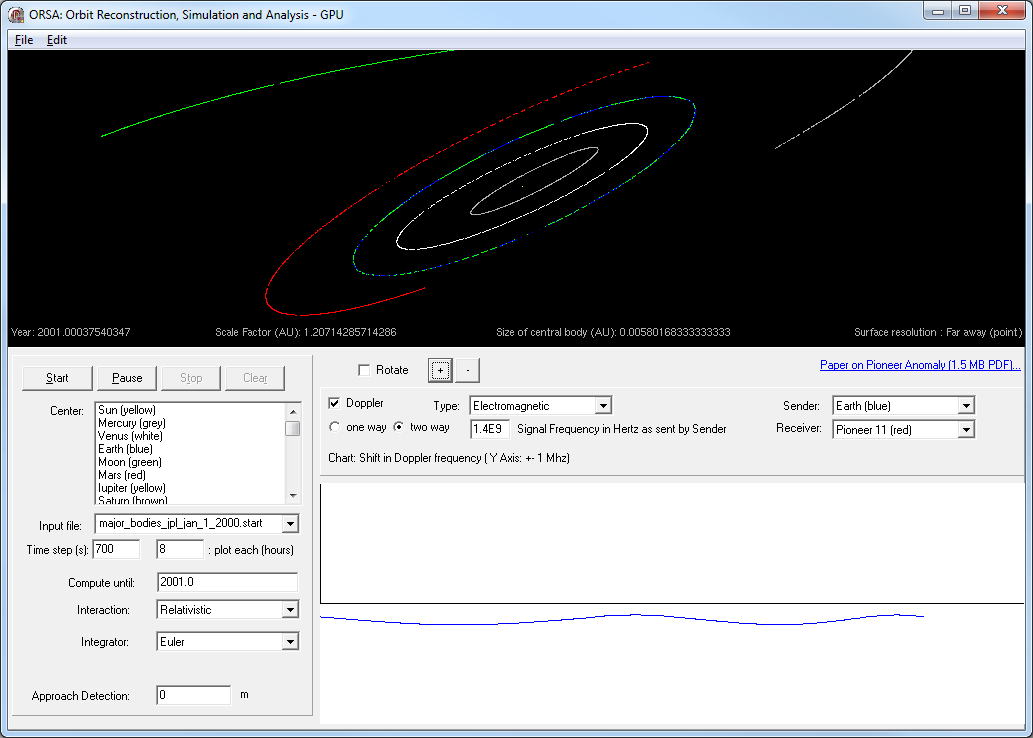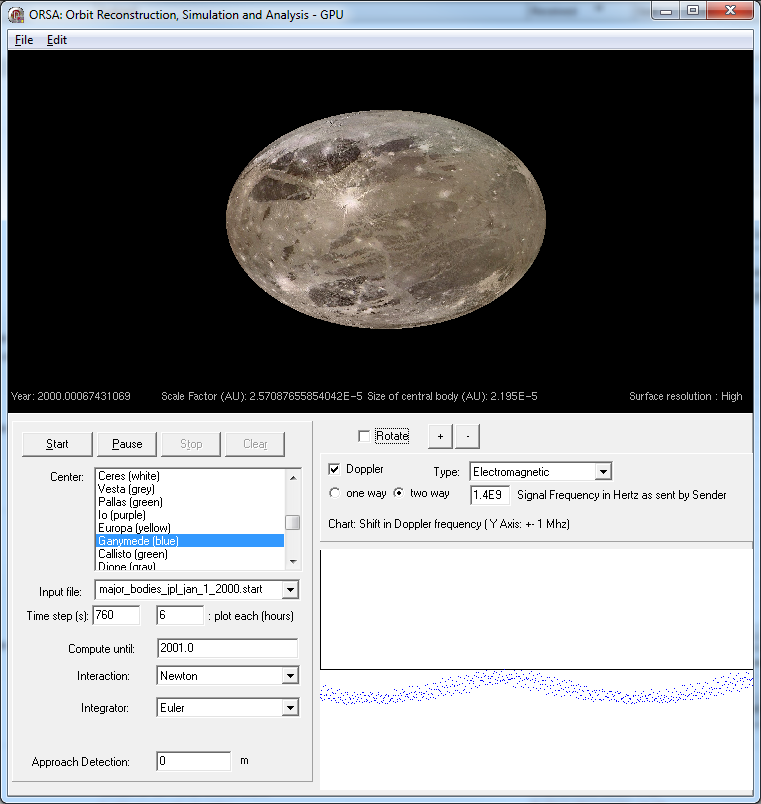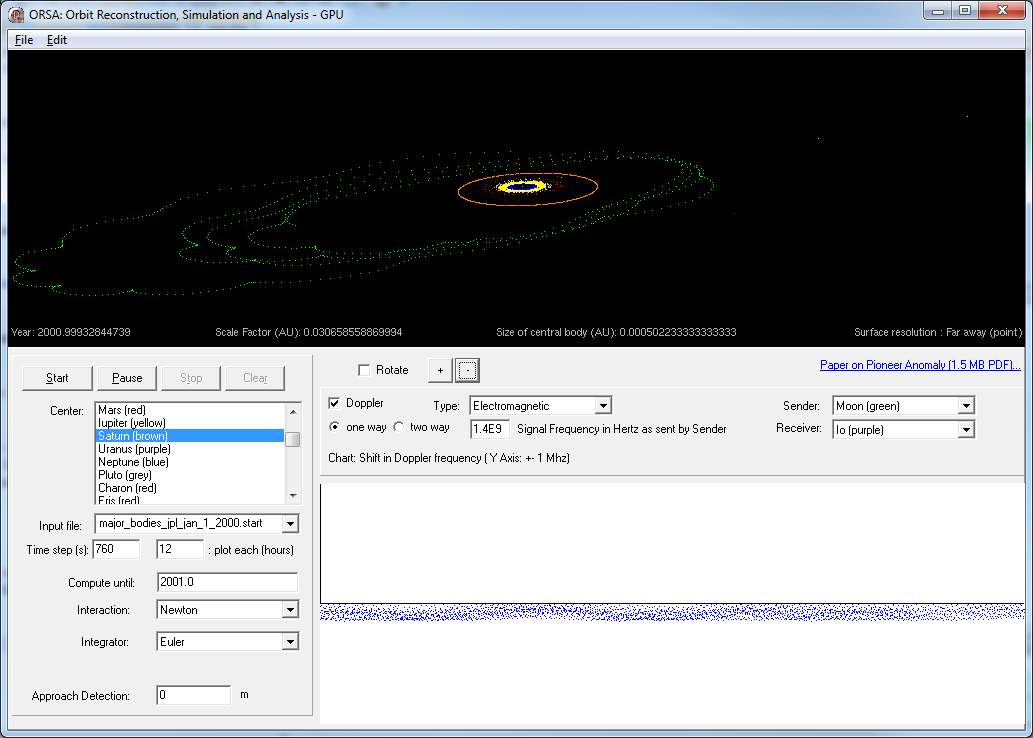
Donate Gridcoins

to implement
Gridcoin reward
in GPU
Address:
SEtxQ4SePHSP
2xSfjy4MATvC
WGoFMCcahn
Intro & News
Download
(stable 10/2012)
Results
 Movies...
Movies... Huygen's
Huygen'sLanding
Status
Extensions
generator
Search Engine
Recommended readings

OS People:
deep space computing AGVisual Synapse
Delphi Packager
Lazarus
Free Pascal
Calculating Pi
Database Version Control
Hubble in a bottle!
DelphiGL
Mutella
Khan Academy
Others:
Chalet Poschiavohacker.org
Terragen Tutorial
Picas
Small world
ORSA, Orbit Simulation and Reconstruction for GPU

The frontend ORSA is a partial, unofficial and unmantained port in Delphi from some of the ORSA libraries in C++ made by Pasquale Tricarico. The purpose of the port was to investigate the Pioneer Anomaly by adding some functions to mimic radio signals between the space probe and Earth. It was a pure amateurial attempt and nothing special could be found. Especially, the radio signals from the space probe in GPU ORSA did not show a linear drift in the signal as received on Earth after removal of the Doppler wobbling, even when experimenting with relativistic or MOND interactions. The frontend does have a plugin which performs the computation on the local GPU node. The computation could be theoretically run in parallel, if some approach with parametric spaces would be attempted. The source code of GPU ORSA is available in module gpu_solar on CVS, under lib/liborsa, src/frontend/orsa and src/dllbuilding/orsa.
The Pioneer Anomaly was originally reported in this paper:
Study of the anomalous acceleration of Pioneer 10 and 11, Anderson et al.
The solution to the Pioneer Anomaly which does not involve new Physics is here:
Support for the thermal origin of the Pioneer anomaly, Turysehv et al.
In fact, the geometry of the antenna dish in combination with the radioactive heat of the space probe should explain the anomalous acceleration toward the sun.In the following, we show some screenshots of the GPU ORSA frontend, which to date does not run concurrently on the GPU network, but only on your local GPU node:

The signal with frequency 1.4GHz is sent first from Earth to the Pioneer spacecraft. Pioneer takes this signal and retransmits it back to Earth. The chart at the bottom of the window depicts how the retransmitted signal is received back on Earth. The wobbles are due to Earth motion around the Sun.

This is a closeup view of Ganymede, Jupiter's largest moon. GPU Orsa can render closeup views of many Solar System's planets and moons.

Saturn Moon's dance: the moon with irregular orbit at the outside is Iapetus. Is this due to poor numerical performance of Euler integrator?
GPU, a P2P-computing cluster software, © 2002-2015 by the GPU Development team